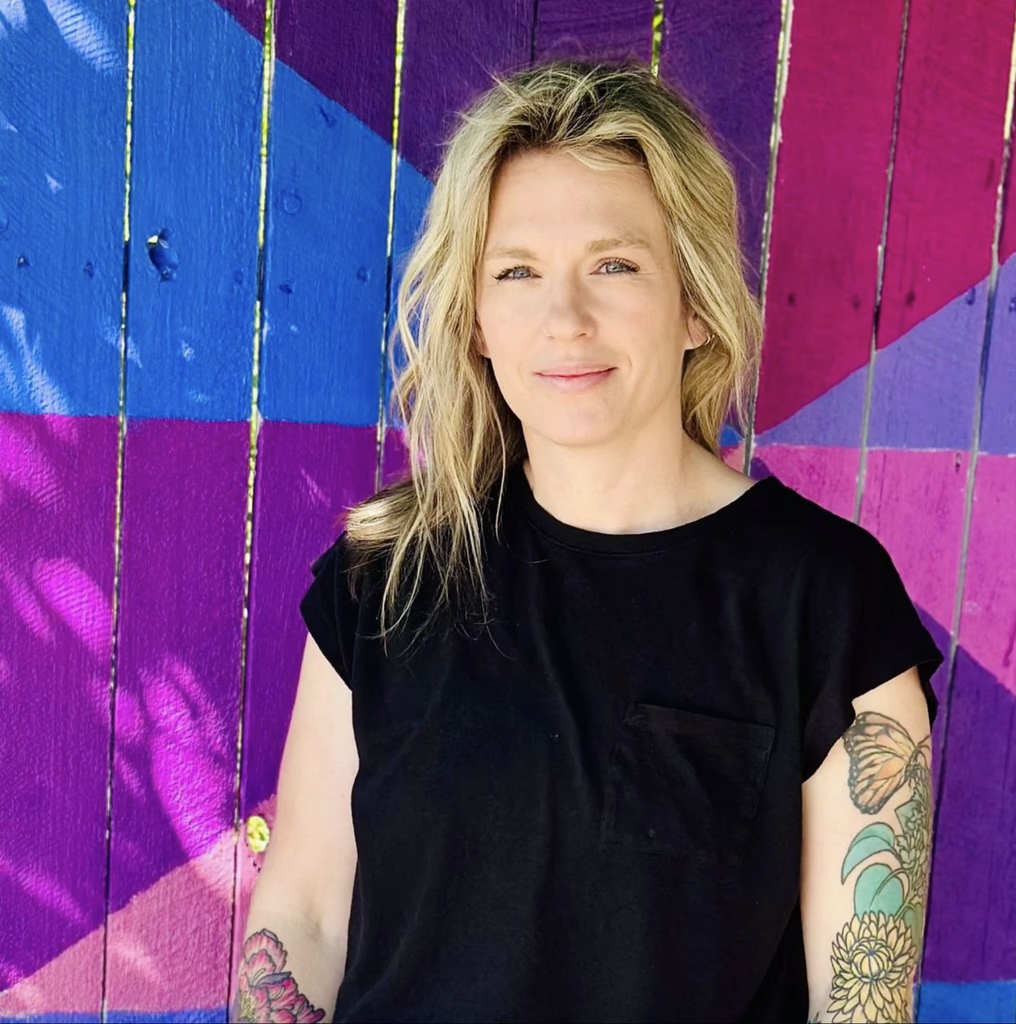My Head Start Program Guide for Parents and Providers
Learn how My Head Start helps ABA clinicians support early childhood development through practical strategies, expert insights, and helpful clinical resources.

My Head Start: A Guide for ABA Clinicians
In the world of early childhood development, we know that early intervention is key. As BCBAs, we're always looking for ways to support families and provide them with the tools they need to help their children thrive. Head Start is a crucial program that offers a comprehensive approach to early childhood education, health, and family well-being. But understanding the intricacies of the program – who qualifies, what services are offered, and how to apply – can be complex. This post will serve as your guide to my head start, breaking down the essentials and empowering you to connect families with this invaluable resource. Let's explore how Head Start can help the children you work with reach their full potential.
Key Takeaways
- Head Start is a comprehensive program: Supporting children ages 0-4, Head Start provides resources encompassing education, nutrition, health, and family engagement. Eligibility is primarily income-based, but other factors are considered. Connecting families with their local program is the first step.
- Parent participation is encouraged: Head Start offers various avenues for parents to engage in their child's learning journey and the program community. This involvement strengthens families and the program as a whole.
- Head Start fosters kindergarten readiness: The program focuses on social, emotional, and academic development, equipping children with essential skills for a successful transition to kindergarten. Close collaboration with local schools ensures a smooth and supportive experience.
What is Head Start?
Head Start is a federally funded program in the United States that provides comprehensive early childhood education, health, nutrition, and parent involvement services to low-income children and families. The goal is to promote school readiness by enhancing the social and cognitive development of children. It's a valuable resource for families looking to give their kids a strong foundation for future success.
Understanding Age Groups: Early Head Start and Head Start
Head Start serves children ages three to four, preparing them for kindergarten. Early Head Start focuses on infants and toddlers from birth to age three, providing crucial support during the earliest stages of development. Both programs offer full-day, year-round services, ensuring consistent care and learning opportunities. The NYC Department of Education explains that these programs offer at least eight hours of daily care, including summers. This comprehensive approach recognizes the importance of early intervention and ongoing support for young children and their families.
Defining Program Goals and Objectives
Head Start aims to create safe and positive learning environments where children can thrive. The program takes a holistic approach, addressing educational needs as well as health, nutrition, and family well-being. For children aged three and four, the focus is on building a solid foundation for kindergarten and beyond, fostering a love of learning through play and exploration. Early Head Start prioritizes high-quality childcare for infants and toddlers, creating a nurturing and stimulating environment. Beyond the classroom, Head Start offers crucial family support, including help with employment, housing, and adult education, according to the NYC Department of Education. These resources empower families to create stable and supportive home environments.
Who Qualifies for Head Start?
Knowing if a family qualifies is the first step in accessing Head Start's resources. Let's break down the eligibility requirements.
Income Requirements
Head Start prioritizes families with incomes below the federal poverty guidelines. These guidelines are updated yearly and vary based on family size and location. Families experiencing homelessness, living in temporary housing, or receiving government assistance such as Housing and Redevelopment Authority (HRA), Supplemental Nutrition Assistance Program (SNAP), or Supplemental Security Income (SSI) also automatically qualify. Children in foster care are also eligible regardless of their foster family's income.
Other Eligibility Factors
Income isn't the only factor determining Head Start eligibility. A family's citizenship status doesn't affect their eligibility for Head Start programs. Some programs may prioritize children with disabilities or those from families facing specific challenges. Even if a family's income is slightly above the poverty guidelines, applying is still worthwhile. Programs often have some flexibility and may consider the family's overall financial situation. Contacting a local program directly is the best way to confirm eligibility and get specific guidance.
What Does Head Start Offer?
Families enrolled in Head Start gain access to a comprehensive set of services designed to support early childhood development and family well-being. These services are free and cover a wide range of needs, from education and nutrition to family support and health services. Let's take a closer look at what's included.
Early Childhood Education
Head Start provides free, full-day, year-round early childhood education programs. For children aged 3-4, the Head Start program itself offers a nurturing learning environment with at least eight hours of daily care, including summer months. For infants and toddlers aged 0-2, Early Head Start provides similar comprehensive care. This consistency helps create a stable and enriching experience for young children.
Health and Nutrition Benefits
Beyond education, Head Start prioritizes children's health and well-being. The program offers nutritious meals, ensuring children receive a balanced diet. Regular health screenings help identify any potential health concerns early on. Head Start also provides family support services, such as help with job searches, housing assistance, and access to adult education. These resources empower families to create stable and supportive home environments.
Family Services and Engagement
Head Start recognizes the crucial role families play in a child's development. The program actively encourages family engagement and offers various opportunities for parents to participate in their child's education and the Head Start community. This approach strengthens the parent-child bond and creates a supportive network. The goal is to support the whole family, recognizing that a strong family unit contributes significantly to a child's overall success.
How Do I Apply for Head Start?
So, you're ready to explore Head Start for your clients? Great! This section breaks down the application process, from finding a program to tackling potential enrollment hurdles.
Finding Your Local Program
First things first, locate your nearest Head Start program. The MySchools website is a handy tool for this, allowing you to search by your area and connect with relevant programs. Keep in mind that while enrollment is often ongoing, space can be limited, so it's always best to inquire early.
Application Steps
Once you've identified a program, reach out to them directly. They can walk you through their application process and determine your client's eligibility. Generally, eligibility depends on income and other circumstances. Families typically qualify if their income falls below federal poverty guidelines, if they are experiencing homelessness and residing in temporary housing, or if they receive government assistance such as TANF, SNAP, or SSI. Children in foster care are also eligible. Importantly, citizenship status is not a barrier to Head Start.
Overcoming Enrollment Hurdles
Even if a family's income is slightly above the official guidelines, it's still worth applying. Many Head Start programs have some leeway with their enrollment criteria. Don't let a potential hurdle discourage you from exploring this valuable resource for your clients.
How Does Head Start Impact Child Development?
As BCBAs, we know how important early intervention is, and its significant impact on a child's development. Head Start programs are key to supporting children's growth in several areas, setting them up for success later on. Let's look at the key ways Head Start makes a difference:
Academic Readiness
Head Start creates positive learning environments where children aged 3-4 can build pre-literacy, pre-math, and language skills. These programs use play, exploration, and social interaction to teach, getting children ready for kindergarten. This early learning focus helps children develop a strong foundation in essential skills, giving them a head start in their education. The NYC Department of Education emphasizes the program's dedication to kindergarten readiness.
Social and Emotional Growth
Head Start understands that social and emotional development is just as important as academics. The program provides a nurturing environment where children learn to interact with their peers, manage emotions, and solve problems. These programs also offer health screenings and family support, addressing important needs that affect a child's overall well-being. By building these essential social-emotional skills, Head Start gives children the tools they need to do well socially and build healthy relationships.
Long-Term Advantages
Discussions about Head Start often include its positive impact on children and the benefits for low-income families. It's also important to be aware of ongoing conversations about the program's model and practices, including how it's structured and how resources are used. As BCBAs, staying informed about these discussions helps us advocate for the best possible outcomes for the children and families in our care.
How is Head Start Structured?
Classroom Environment and Daily Routines
Head Start programs, designed for 3- and 4-year-olds, and Early Head Start, for children from birth to age 3, operate as free, full-day, year-round early childhood education programs. They offer at least eight hours of daily care, including summer months. These programs focus on providing a safe and enriching learning environment. Beyond academics, they offer nutritious meals, regular health screenings, and family support services. These support services can include job assistance, housing support, and adult education opportunities.
Inclusive Learning for Children with Special Needs
While Head Start strives to offer well-rounded early childhood education, the program’s structure has drawn criticism regarding its approach to inclusion. Some argue that by separating low-income children and children with disabilities into different classrooms, the program contradicts current inclusive education practices, which prioritize integrated learning. This online discussion among early childhood education professionals raises these concerns. It acknowledges that full inclusion isn't always feasible due to resource constraints and the potential for behavioral challenges. However, the inherent segregation within the Head Start model remains a topic of debate and a potential area for growth.
How Can Parents Get Involved?
Head Start recognizes the vital role parents play in a child's development. It's not just about the child attending the program; it's about building a strong, supportive network that nurtures growth at home and in the classroom. This section explores how parents can actively participate in the Head Start experience.
Opportunities for Engagement
Head Start programs offer various ways for parents to get involved, from volunteering in the classroom to participating in program governance. Parents can attend workshops on child development topics like early literacy and positive parenting techniques. They can also contribute to decision-making, serving on policy councils or parent committees that shape the program's direction. This collaborative approach ensures the program remains responsive to families' needs. Head Start provides a positive learning environment for children aged three and four, preparing them for kindergarten. Early Head Start offers similar services for infants and toddlers, focusing on early childhood development. These programs offer a safe and nurturing space for children to grow while providing resources and support for their families.
Building a Supportive Network
Head Start and Early Head Start aim to support the whole family. Connecting with other parents creates a valuable network for sharing experiences and advice. Parents can learn from each other, building stronger parenting skills and fostering a sense of community. Applying is straightforward—contact your local program directly. Eligibility often depends on income falling below federal poverty guidelines, but families in foster care automatically qualify. Importantly, citizenship status isn't a factor. The focus is on providing support where needed, regardless of background.
How Does Head Start Prepare Children for Kindergarten?
Getting ready for kindergarten is a big step, and Head Start programs are designed to support children through this transition. Let's explore how these programs equip kids with the skills they need and collaborate with local schools to ensure a smooth start.
Skills Developed
Head Start provides safe, positive learning environments for children ages 3-4. These programs focus on developing essential skills crucial for kindergarten readiness, including social-emotional development, cognitive skills, and early literacy and numeracy foundations. Think of it as building a strong base for future academic success and helping children learn to interact positively with their peers and teachers. Head Start recognizes that a child's overall development is key to a successful kindergarten experience.
Collaboration with Local Schools
Collaboration is essential. Head Start programs work closely with local schools to ensure a smooth transition for children entering kindergarten. This often involves sharing information about each child's progress and individual needs. By understanding a child's strengths and areas for growth, schools can tailor their support. This collaborative approach creates a more consistent learning experience, making the move from Head Start to kindergarten feel like a natural progression. This partnership between Head Start and schools is vital for kindergarten readiness.
What Resources are Available for Head Start Families?
Beyond the classroom, Head Start programs offer a wide range of resources designed to support the entire family. These resources go beyond early childhood education and address crucial needs that can impact a child's development and overall well-being. Knowing what’s available can help families make the most of their Head Start experience.
Additional Services and Continuing Education
Head Start recognizes that parents are a child's first and most important teachers. That's why many programs offer adult education opportunities, including parenting skills workshops, job training, and even GED preparation. These programs empower parents to pursue their own goals, which in turn creates a more stable and supportive home environment for their children. Beyond education, Head Start programs often connect families with essential services like housing assistance and job placement support, further strengthening their ability to provide for their children. Access to nutritious meals and regular health screenings are also key components, ensuring children's physical well-being is nurtured alongside their educational development.
Transportation Assistance
Getting kids to and from preschool can be a logistical challenge, especially for families with limited access to reliable transportation. Head Start understands this and offers transportation assistance to help families overcome this hurdle. Whether it's bus routes, carpools, or other forms of support, these programs aim to make attending preschool consistently possible for every child. This commitment to accessibility ensures that no child misses out on the valuable learning experiences Head Start provides.
What are Some Head Start Success Stories?
When you're considering enrolling a child in Head Start, it's helpful to see how the program has made a difference for others. Real-world examples and personal stories can offer valuable insights and build confidence in your decision.
Positive Outcomes for Children and Parents
Head Start programs offer a variety of services designed to support both children and their families. For children ages 3 and 4, Head Start creates safe and positive learning environments to help them prepare for kindergarten. Early Head Start focuses on infants and toddlers up to age 3, providing crucial early childhood development support. According to the NYC Department of Education, these programs offer a range of services, including a nurturing learning environment, nutritious meals, health screenings, and family support services. These family services can include help with employment, housing, and continuing education for parents.
Testimonials and Program Impact
Beyond the structured services, what kind of impact does Head Start have in practice? GoEngage, a data management software provider for Head Start programs, showcases testimonials from program directors. These firsthand accounts often highlight positive changes they've observed, from improved efficiency to more effective reporting. Online forums, such as discussions on Reddit, offer a wider range of perspectives. Many commenters praise Head Start's positive influence on children's lives and the valuable support it extends to low-income families. Others discuss challenges like staff compensation and the complexities of working with children with significant needs. Reading through these varied viewpoints can give you a balanced understanding of the program's strengths and potential drawbacks.
Related Articles
- Head Start & Your BCBA Practice: A Complete Guide - Alpaca Health
- How to Start an ABA Therapy Practice: Your Complete Guide - Alpaca Health
- Learn About CABI: ABA Services and School-Based Support - Alpaca Health
Frequently Asked Questions
My client's income is just above the poverty line. Should they still apply for Head Start?
Absolutely. While income is a primary factor, Head Start programs often have some flexibility. They consider the overall financial picture, so it's always worth applying, even if income slightly exceeds the guidelines. Connecting with your local program directly is the best way to determine eligibility.
What if my client isn't a U.S. citizen? Can their child still participate in Head Start?
Yes. A family's citizenship status doesn't impact their child's eligibility for Head Start programs. The program focuses on supporting children and families in need, regardless of their immigration status.
What age groups does Head Start serve?
Head Start serves children ages three and four, preparing them for kindergarten. Early Head Start serves infants and toddlers from birth to age three, providing crucial support during their earliest years.
Beyond preschool, what other services does Head Start offer?
Head Start offers a comprehensive set of services, including health screenings, nutritious meals, and family support. These services can include help with employment, housing, and adult education opportunities. The goal is to support the whole family, recognizing that a strong family unit benefits the child.
How can I find a Head Start program near my client?
The easiest way to find a local program is to use online search tools like the MySchools website. You can also contact your local Department of Education or social services agencies for referrals. They can connect you with programs in your area and guide you through the application process.
Looking for a change?
Start an ABA practice today — with none of the admin burden.





